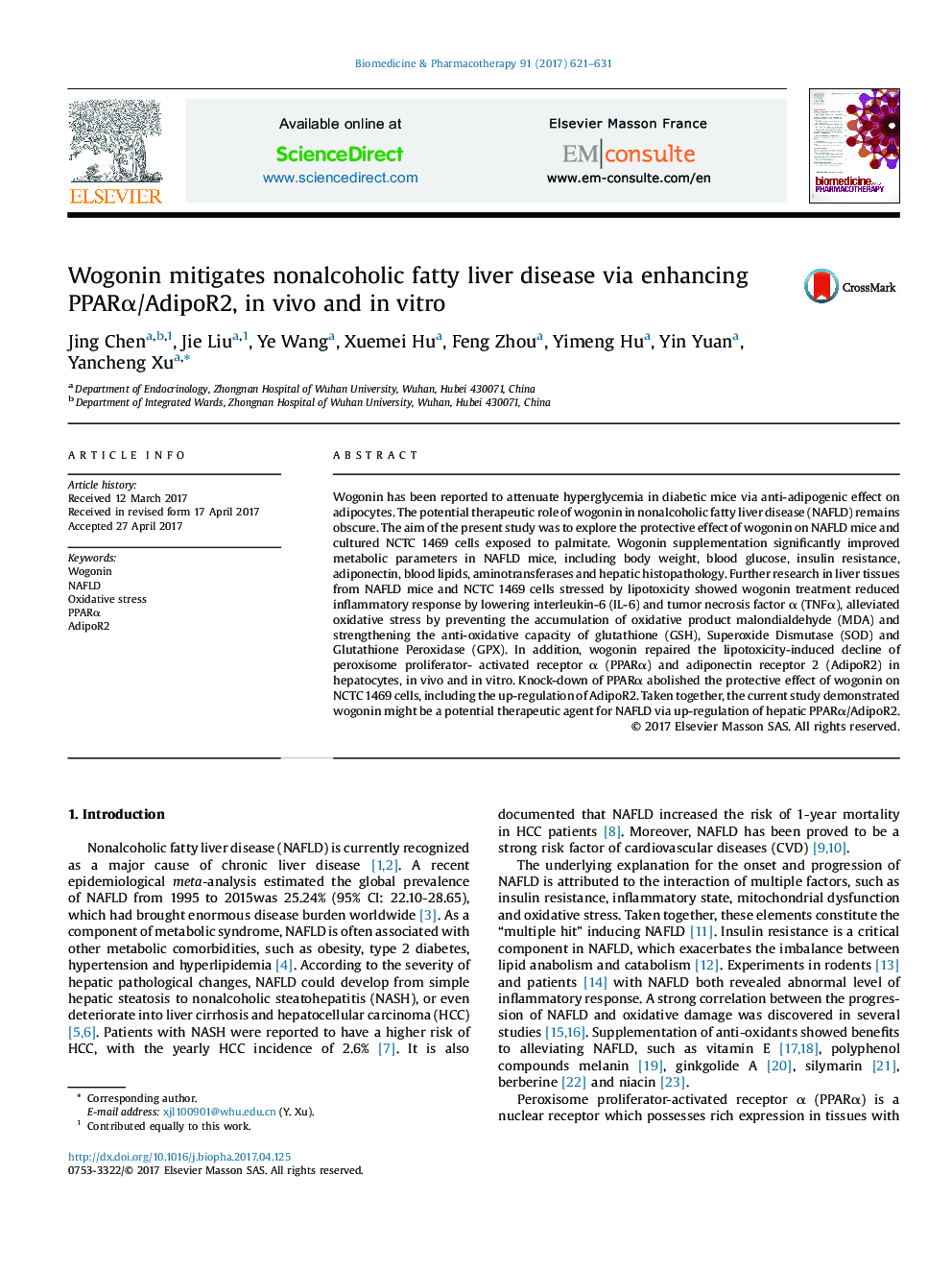| Article ID | Journal | Published Year | Pages | File Type |
|---|---|---|---|---|
| 5552975 | Biomedicine & Pharmacotherapy | 2017 | 11 Pages |
Wogonin has been reported to attenuate hyperglycemia in diabetic mice via anti-adipogenic effect on adipocytes. The potential therapeutic role of wogonin in nonalcoholic fatty liver disease (NAFLD) remains obscure. The aim of the present study was to explore the protective effect of wogonin on NAFLD mice and cultured NCTC 1469 cells exposed to palmitate. Wogonin supplementation significantly improved metabolic parameters in NAFLD mice, including body weight, blood glucose, insulin resistance, adiponectin, blood lipids, aminotransferases and hepatic histopathology. Further research in liver tissues from NAFLD mice and NCTC 1469 cells stressed by lipotoxicity showed wogonin treatment reduced inflammatory response by lowering interleukin-6 (IL-6) and tumor necrosis factor α (TNFα), alleviated oxidative stress by preventing the accumulation of oxidative product malondialdehyde (MDA) and strengthening the anti-oxidative capacity of glutathione (GSH), Superoxide Dismutase (SOD) and Glutathione Peroxidase (GPX). In addition, wogonin repaired the lipotoxicity-induced decline of peroxisome proliferator- activated receptor α (PPARα) and adiponectin receptor 2 (AdipoR2) in hepatocytes, in vivo and in vitro. Knock-down of PPARα abolished the protective effect of wogonin on NCTC 1469 cells, including the up-regulation of AdipoR2. Taken together, the current study demonstrated wogonin might be a potential therapeutic agent for NAFLD via up-regulation of hepatic PPARα/AdipoR2.
